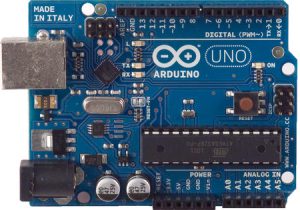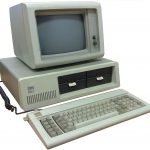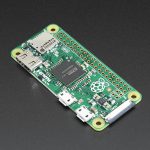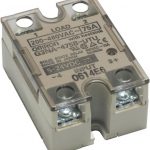 In Part 1, I talked a little bit about the vision for the internet of things, but I didn’t really define what I meant by the internet of things.
In Part 1, I talked a little bit about the vision for the internet of things, but I didn’t really define what I meant by the internet of things.
What I’m talking about when I talk about the Internet of Things is a profusion of small devices that are all connected to the network and therefore to the Internet. Whereas most of the things in your home that are connected to the network have keyboards and screens and are meant for you to interact with, I’m talking about things that instead have sensors and relays and actuators. In most cases, you won’t interact with them at all. They’ll just work automatically in the background either gathering data for you or controlling equipment. Most of these things you’ll set up and never touch them again, but they’ll be working quietly in the background for you day and night.
 If you are as old as I am (and I hope you’re not!), you remember the first wave of personal computers: the Apple II, the CP/M machines like the Kaypro and Osborne, and the original IBM PC – these were amazing because they were real computers that could do useful things (spreadsheets, word processing, and calling bulletin board systems) but were small (the size of a suitcase, more or less) and inexpensive (a few thousand dollars – in the 1980s) enough for home use.
If you are as old as I am (and I hope you’re not!), you remember the first wave of personal computers: the Apple II, the CP/M machines like the Kaypro and Osborne, and the original IBM PC – these were amazing because they were real computers that could do useful things (spreadsheets, word processing, and calling bulletin board systems) but were small (the size of a suitcase, more or less) and inexpensive (a few thousand dollars – in the 1980s) enough for home use.
The kinds of computers that we are talking about here are significantly smaller (typically the size of a credit card) and significantly less expensive (most under $100, many of them less than $10), even though they have 10-100x the computing power of those early personal computers. Instead of keyboards and screens, they have network ports and connections for various sensors and/or actuators; most can run for hours or days on a small battery – some can run for months. They can sit in in a tiny place, collecting data and transmitting it to the network, or waiting for a command to do something, for years.
There are also a wide variety of sensors available, from simple temperature or humidity sensors to weather sensors like anemometers and rain buckets to advanced soil sensors that can measure soil temperature, moisture, and electrical conductivity. There are even sensors for UV radiation, leaf wetness, and chemicals in air and water.
But these little devices can do more than just sit passively measuring conditions. Devices can also be connected to allow them to take action, from simply turning something on to controlling complex machinery automatically. For instance, it is fairly simple to use a simple, small relay to turn an electrical machine on or off.
Multiple relays can be used for multiple devices, and relays come from very small, low-power devices to very high-power solid-state relays for switching very heavy loads. Many of these computers, however, also have the ability to output Pulse-Width Modulated (PWM) signals to control variable-rate devices like valves (control pressure through a water valve for irrigation or a hydraulic valve for controlling machinery) and pumps.
What ties it all together, of course, is two things: a network and software (both on the device and acting as some sort of “back end” to store and manage the data coming from these devices). Without software, any computer, even a $5 one, is just dead weight; without a network, it’s just sitting out in the field collecting data it can’t move to someplace it can be useful.
We know how to build the network – what Ayrstone does is give you the ability to build a strong, standards-based wireless network across your farm – and in part 3 we’ll consider the software part.






